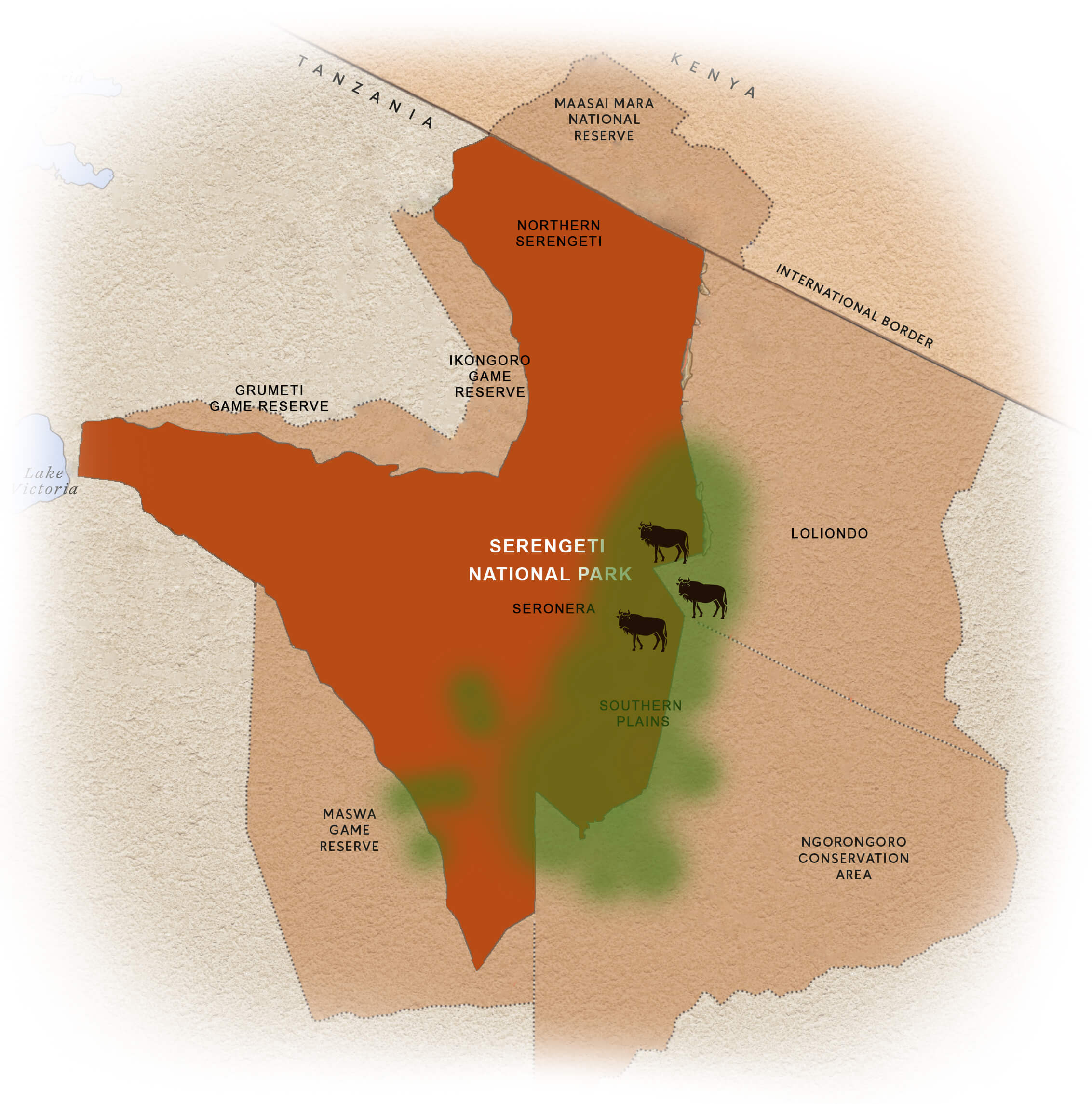Great Wildebeest Migration Map
EXPERIENCE
Tanzania & Kenya
Every year, millions of wildebeests, zebras, antelopes, gazelles, elands, and impalas move through a fairly predictable clockwise movement around the Serengeti-Masai Mara ecosystem in search for better grazing and fresh water. Although their every movement depends on the rainfall patterns, this map will allow you to peek through the flux of the famous Great Wildebeest Migration.
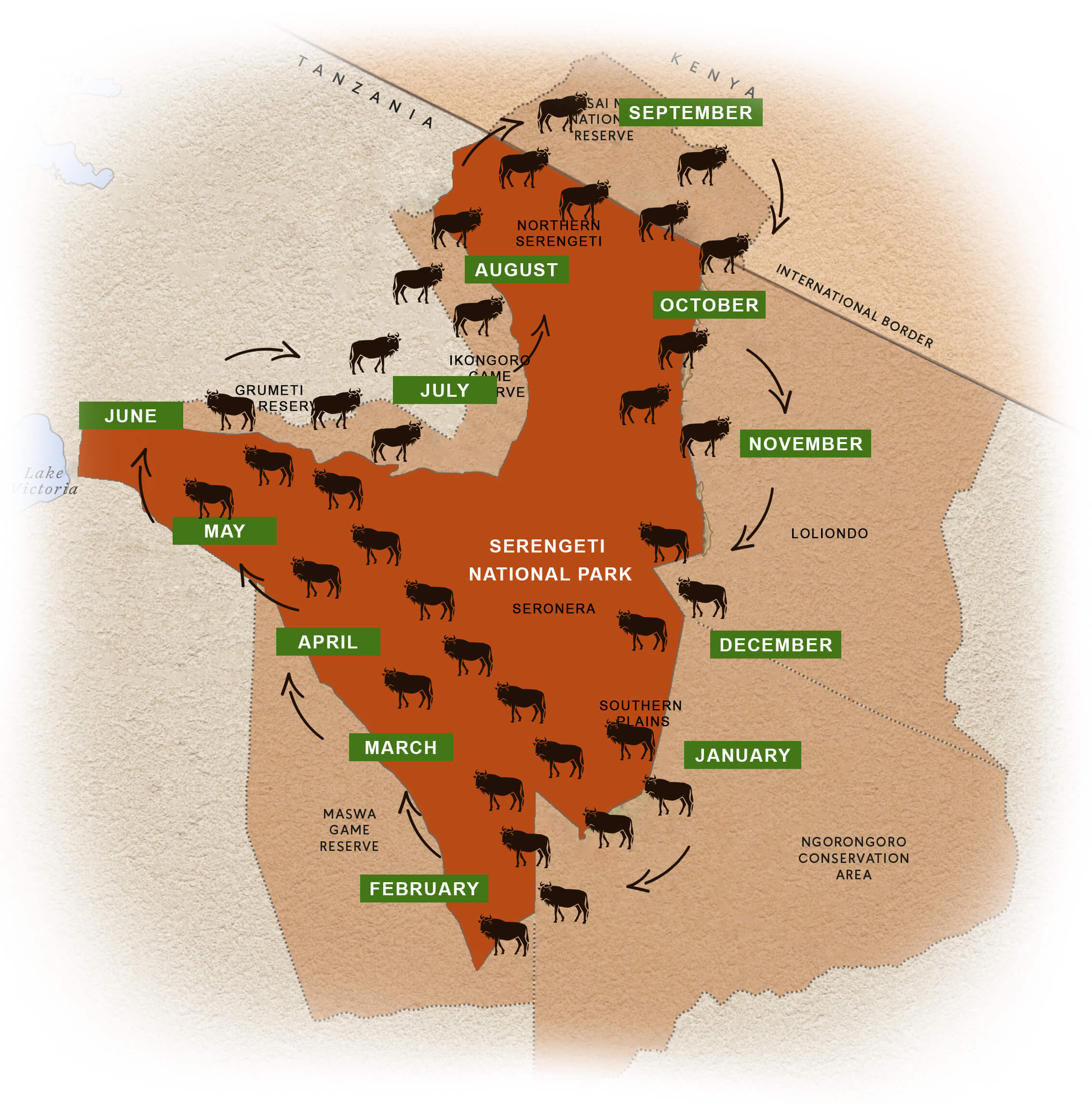
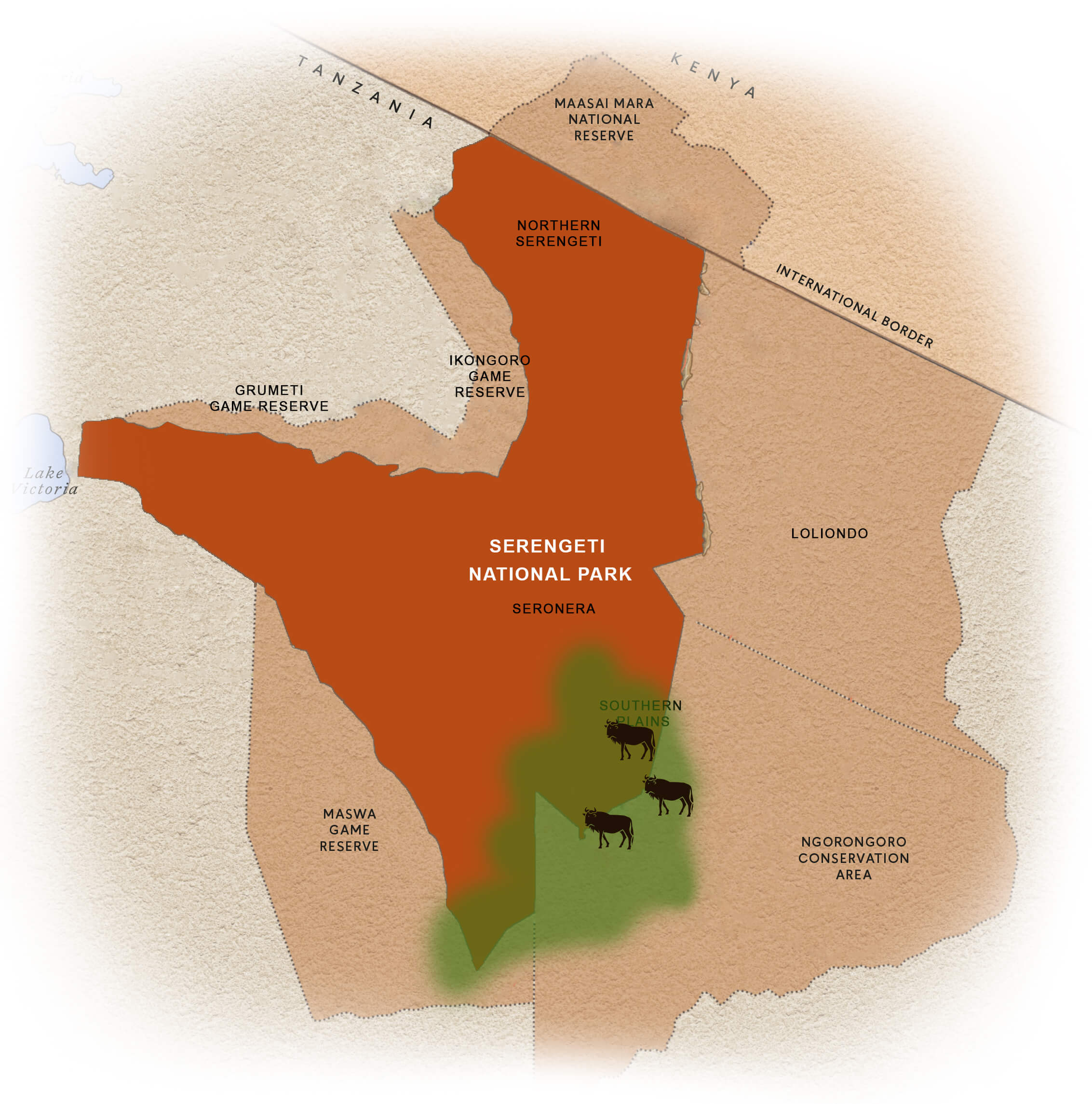
January
The herds are on the short grass plains of southern Serengeti, Ndutu area and the northern part of the Ngorongoro Conservation Area in Tanzania. By the end of the month, the calving season begins. Approximately 8,000 wildebeests are born every day during the height of this season. With thousands of feeble calves, predators are at large while adult wildebeests protect their young.
February
The calving season continues. You can see mother wildebeests making some sort of a barricade around their young to protect from large opportunists like lions, hyenas, and cheetahs. You can also see baby wildebeests taking off just minutes after being born and even little cubs being trained by adult lions to make a kill. This season is certainly one for the books — lots of action, lots of drama, lots of wonders.
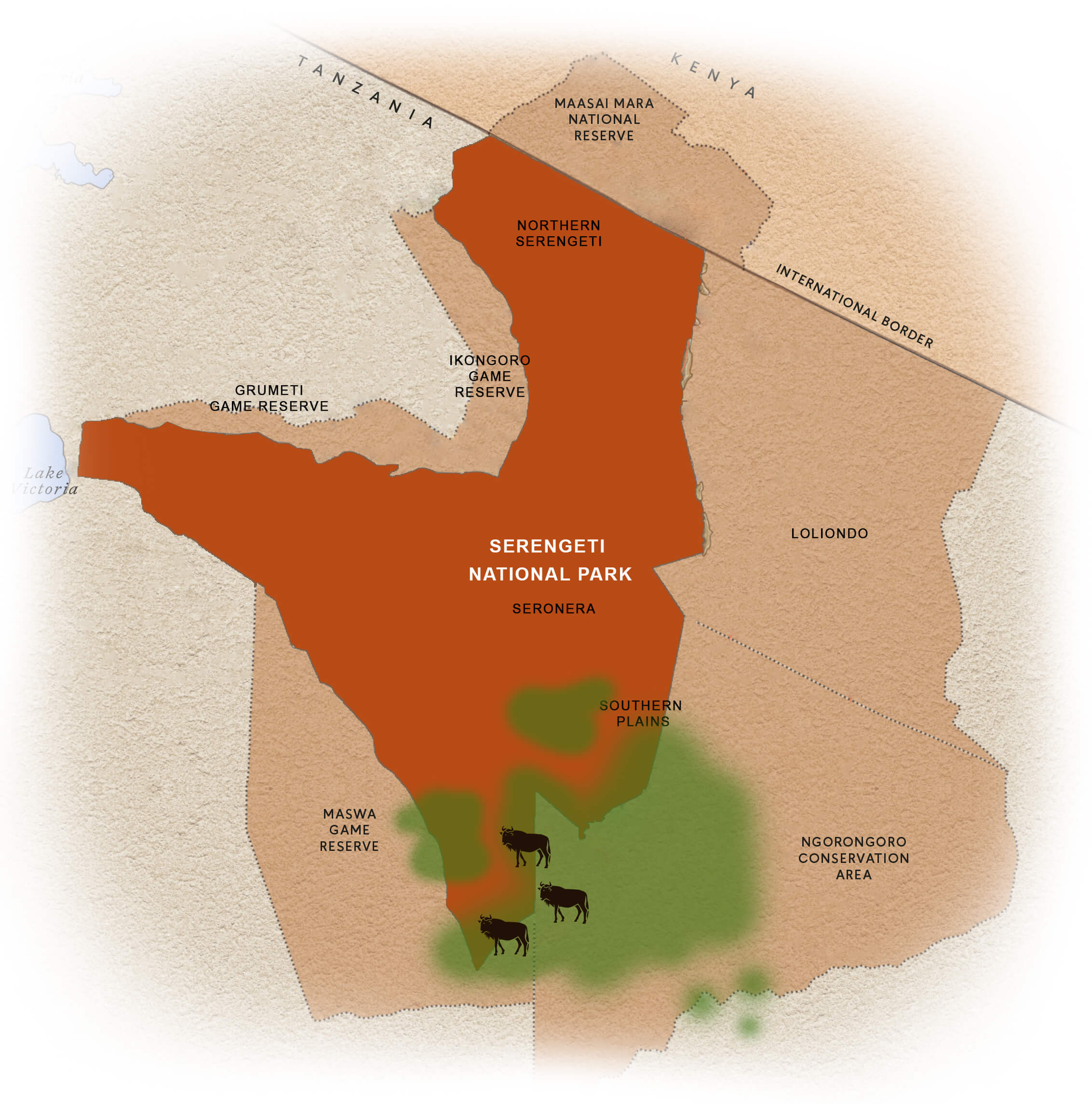
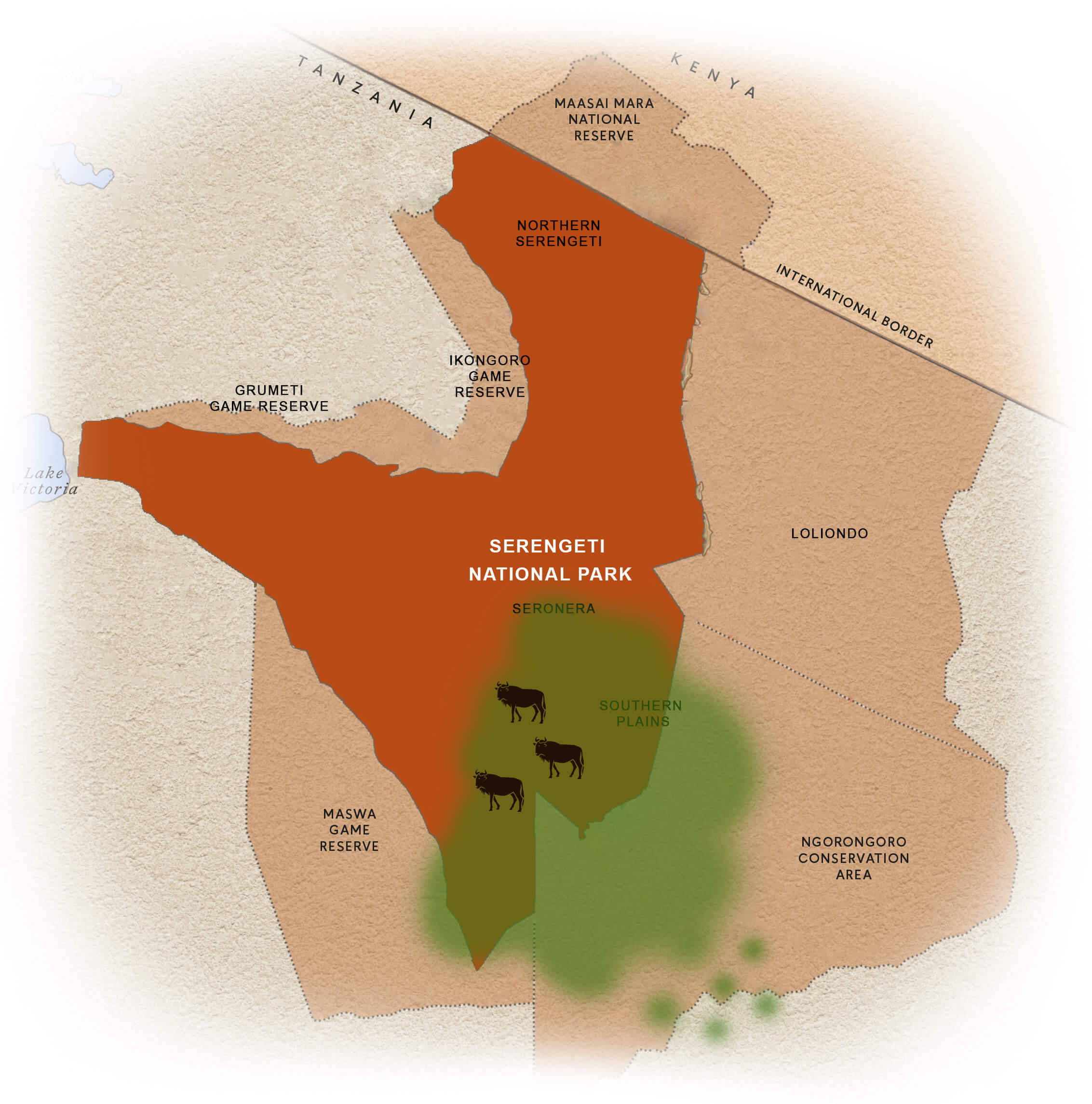
March
The herds remain dispersed across the plains of the southern region of the Serengeti area. They feed on leftover fresh grasses, the last batch of calves are born and then they start to gather around for their next journey heading north.
April
The wildebeest herds start to move northward to seek fresh grazing and water. Some have left early and are already in the central and western regions of the Serengeti.
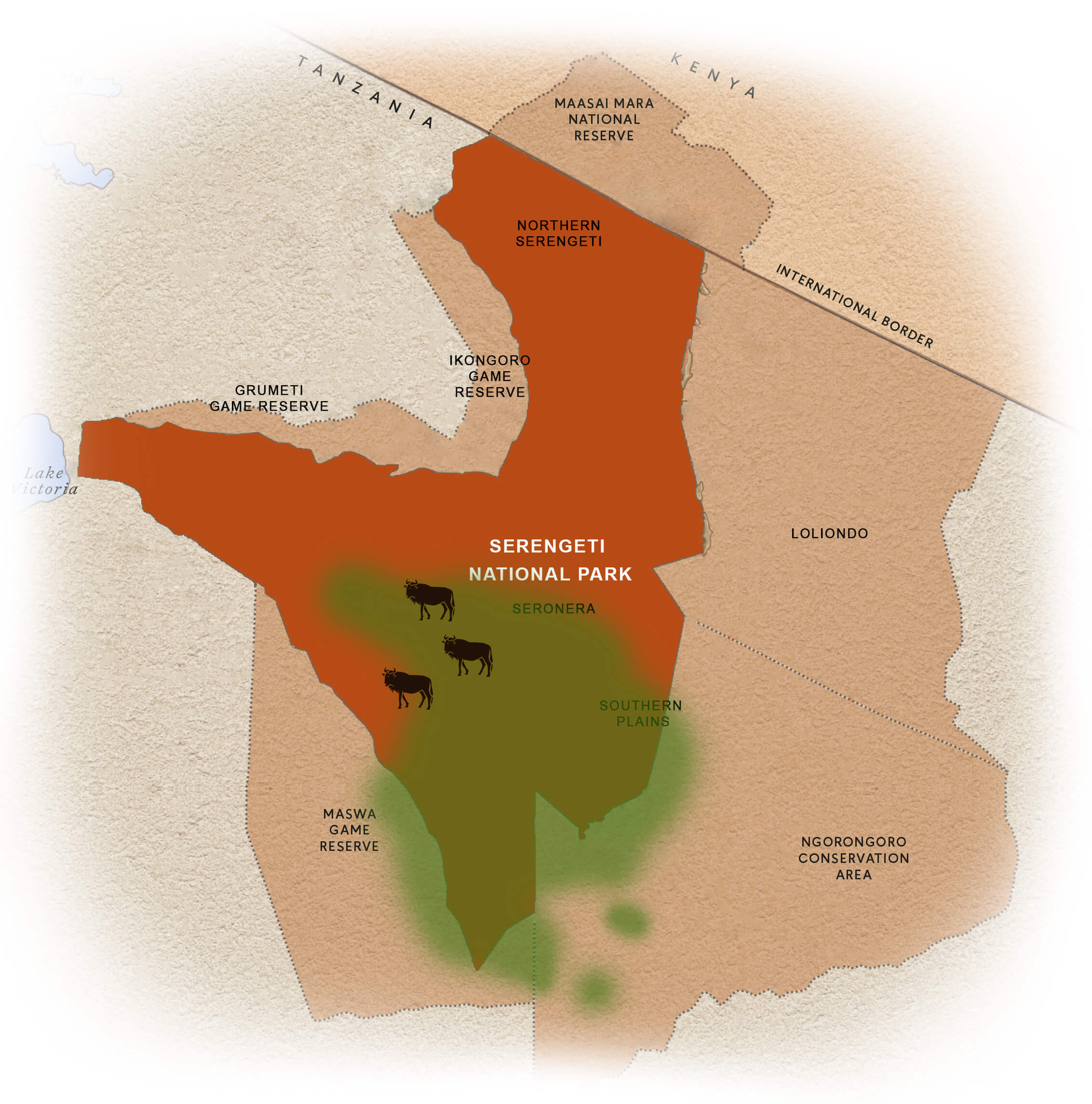

May
The massive herds funnel up into the central and western Serengeti. You can see hundreds and thousands of animals in the areas surrounding Moru Kopjes and western Seronera as the huge wildebeest herds are joined by plenty of zebras as well as Thomson’s and Grant’s gazelles.
June
The migration usually slows down as herds reach the south side of the Grumeti River. They congregate around the Western Corridor where they pile up to cross the series of pools and channels. Large crocodiles await as they do so, but since the river is not continuous, the crossing is not usually as bloody and challenging as the one they’re about to face on their journey further north.

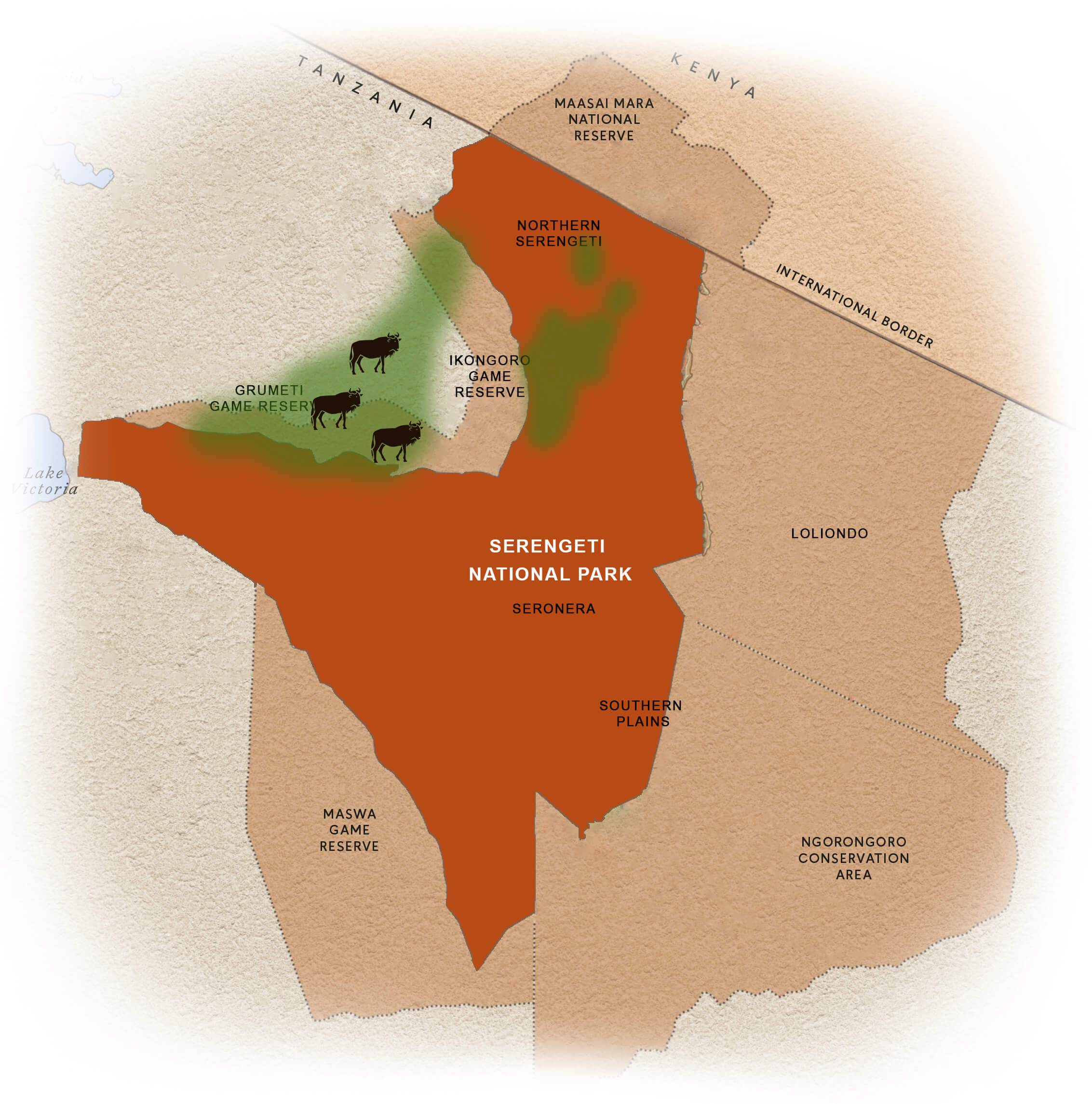
July
Migration continues as most herds scatter around Grumeti Reserve and Ikorongo while a few spread out to the heart of the Serengeti National Park. Prepare yourself because around the end of this month, the incredibly dramatic Mara River crossing ensues. As migrant animals struggle for survival, a wealth of huge Nile crocodiles and mighty hippos await in the brown waters of the river. This spectacular event, known as the “World Cup of Wildlife”, is often deemed “the greatest show on earth.”
August
The action-packed river crossing continues as millions of wildebeests along with thousands of zebras, gazelles, and kudus rush frantically through the river and into the adjacent Masai Mara Game Reserve in Kenya.
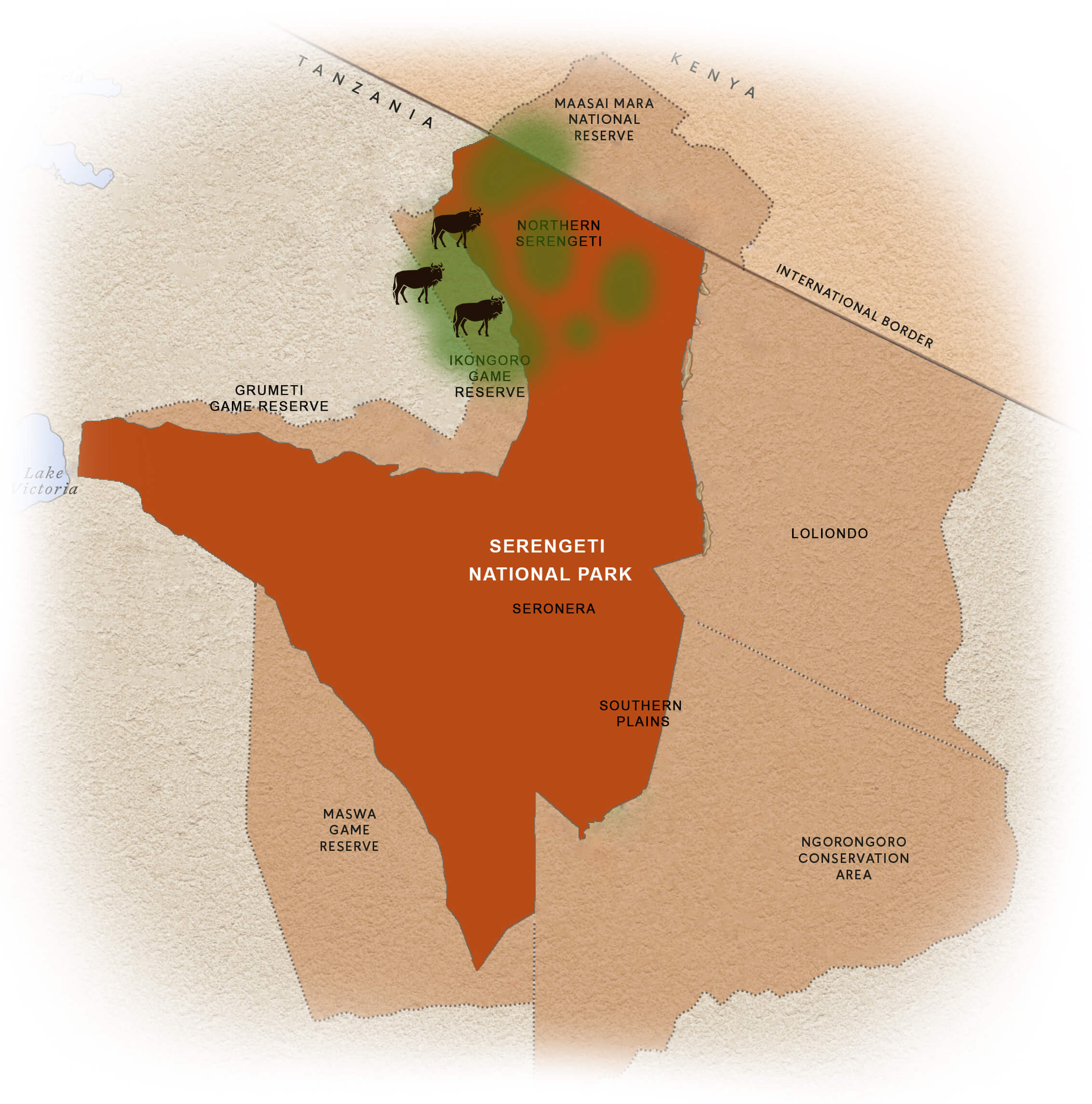

September
The survivors celebrate in the northern plains of the Serengeti while others feast on the lush grasses in Masai Mara. Sometimes, depending on the rains, the movement of the migration extends and the river crossing happens in August and until the first weeks of September.
October
You will see large herds of wildebeests, zebras, antelopes, kudus, and gazelles in Masai Mara Game Reserve. Some of them just stay in the Mara for a few days and move south afterwards.
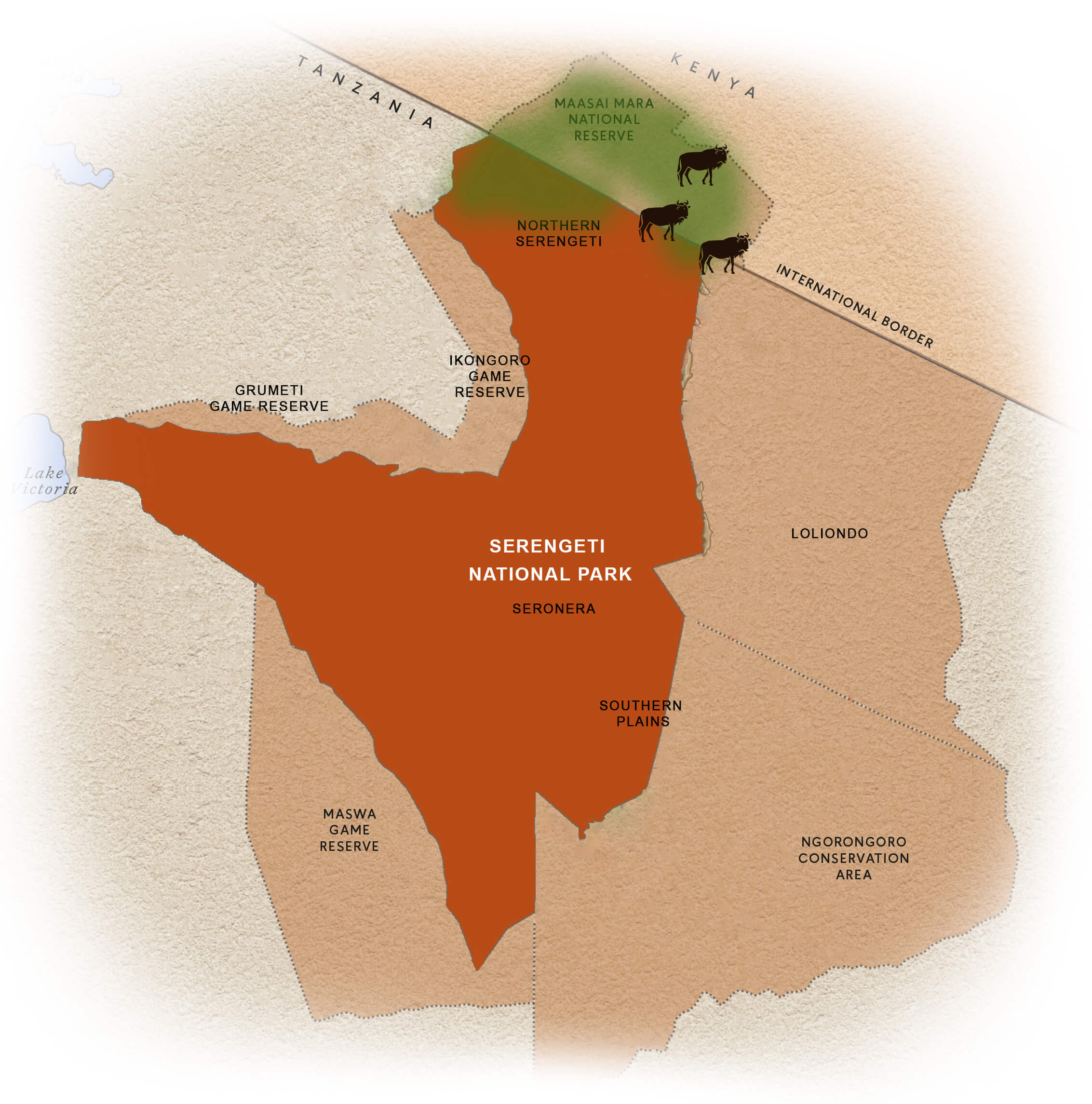

November
Rains begin and the herds start moving down south, leaving Masai Mara. Passing through western Loliondo as well as Serengeti’s Lobo area, the herds move in accord as they move back into the fertile plains of the Serengeti.
December
The herds cluster around the northeastern and southern regions of the Serengeti. They all disperse through the plains and feed on fresh grasses as the calving season creeps up and the cycle begins again.
